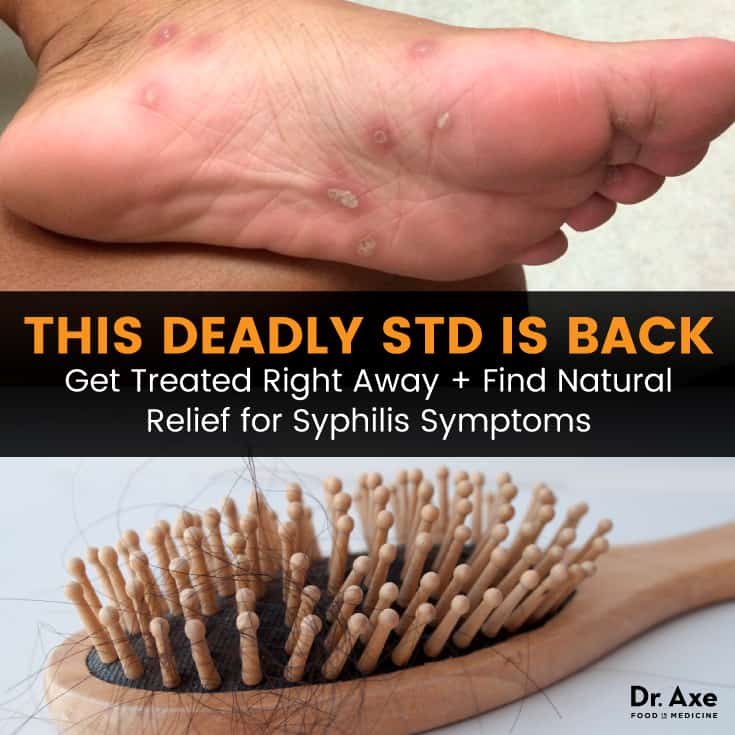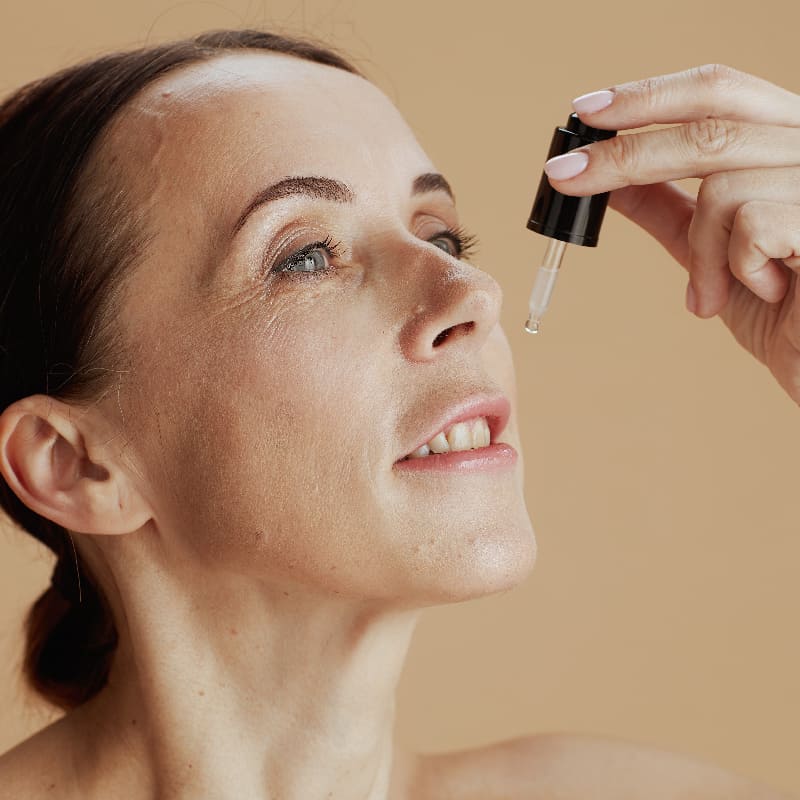This Dr. Axe content is medically reviewed or fact checked to ensure factually accurate information.
With strict editorial sourcing guidelines, we only link to academic research institutions, reputable media sites and, when research is available, medically peer-reviewed studies. Note that the numbers in parentheses (1, 2, etc.) are clickable links to these studies.
The information in our articles is NOT intended to replace a one-on-one relationship with a qualified health care professional and is not intended as medical advice.
This article is based on scientific evidence, written by experts and fact checked by our trained editorial staff. Note that the numbers in parentheses (1, 2, etc.) are clickable links to medically peer-reviewed studies.
Our team includes licensed nutritionists and dietitians, certified health education specialists, as well as certified strength and conditioning specialists, personal trainers and corrective exercise specialists. Our team aims to be not only thorough with its research, but also objective and unbiased.
The information in our articles is NOT intended to replace a one-on-one relationship with a qualified health care professional and is not intended as medical advice.
A Deadly STD Is Back: Recognize These Syphilis Symptoms
August 29, 2017

Syphilis is a curable sexually transmitted disease. However, if left untreated, it can cause serious health conditions and even death. According to the World Health Organization, each year there are an estimated 357 million new sexually transmitted infections worldwide from chlamydia, gonorrhea, syphilis and trichomoniasis. This staggering number includes the nearly 1 million pregnant women per year who have syphilis. Syphilis can be passed to an unborn baby. In 2012, syphilis was responsible for 350,000 adverse birth outcomes and stillbirths. (1, 2)
Infectious disease specialists were once pleased with the near eradication of syphilis in the United States; less than 20 years ago, there were less than 10,000 cases annually. Today, however, it is a different story. Outbreaks of syphilis have made the news in the last couple of years, and we’ve seen a dramatic rise in reported cases.
Syphilis spreads through physical contact with an infected partner, typically sexual contact although non-sexual transmission is also possible. Early detection of syphilis symptoms and treatment with antibiotics are essential. As the bacteria that causes syphilis (Treponema pallidum) can be stubborn, retesting over a period of two years is required. Syphilis is curable with the proper course of antibiotics; however, it will not resolve on its own. Without treatment, syphilis can cause serious health consequences and even death.
What Is Syphilis?
Syphilis is a sexually transmitted disease (STD) caused by the Treponema pallidum bacteria. The proper syphilis treatment is antibiotics. One of the challenges is that syphilis symptoms mimic many other diseases and infections, and many infected individuals may not be aware they have it. Syphilis is a lifelong illness unless antibiotic medication kills the infection. (3)
Why is syphilis back?
In 2000, just 6,000 cases of syphilis were treated, according to the CDC, and the hope was that elimination of this serious, but curable, disease was near. But, in 2014 20,000 new cases were diagnosed, and in 2015 there were 74,702 new cases diagnosed. Experts believe that the numbers for 2016 and 2017, and for the foreseeable future, will continue to climb. The rates of syphilis of the eye and congenital syphilis are rising. Among gay men, the rate of syphilis infection has increased to levels not seen since the 1980s. (4)
Gail Bolan, CDC director of STD prevention, testified at a congressional briefing and said, “This is a sentinel event – it is a failure of the healthcare system.” The truth is that low-cost STD clinics are having their budgets slashed as syphilis rates have risen. In states that have underfunded prevention efforts, the rates are exponentially higher than other states with well-funded clinics, according to the CDC. Many people today are uncomfortable consulting their regular physician about STDs and with the stigma associated with low-cost or free health clinics, many infected people are going untreated. (6)
Syphilis Symptoms
Syphilis symptoms depend on the stage of the disease. While everyone progresses at a different rate, the disease does have four distinct stages. Many people do not know they have syphilis because in the early stages syphilis symptoms seem to resolve themselves without treatment. However, unless the bacteria are killed with antibiotics, the disease continues to lurk in the body causing damage that can ultimately lead to death.
What Are the 4 Stages of Syphilis?
The four stages of syphilis have different signs and symptoms. The stages may overlap with one another, and not every person will experience all of the syphilis symptoms mentioned. You become infected when the bacteria enters the body through mucous membranes (including in the the vagina, mouth, nose and anus), or through any cut or open wound. (7)
Primary: This stage begins anywhere from 10 to 90 days after exposure to the bacteria that causes syphilis. Studies show that the average incubation time between exposure and the primary stage is approximately three weeks. The initial sign is that sores or ulcers — called chancres — occur at the original site of the infection. This is most typically on or around the genitals, anus, in the rectum, or in or around the mouth.
The sores are usually round, firm and painless. However, they may have a slightly different appearance depending on the person. A single sore or multiple sores may appear, and as they are not painful, they may go unnoticed. The ulcers, or chancres, last three to six weeks and heal without treatment.
However, if syphilis is not diagnosed and antibiotics are not taken as prescribed, syphilis will progress to the next stage, the secondary stage.
Symptoms in the Primary Stage of Syphilis:
- Small, painless, open sores or ulcers that heal in three to six weeks, with or without treatment
- Enlarged lymph nodes in area of the initial infection
Secondary: In this stage, syphilis symptoms become a bit more pronounced as the disease progresses through the blood to the skin, liver, lymph nodes, muscles and brain. Six weeks to three months after the chancres from the primary stage have healed, a rash will appear indicating the second stage of this sexually transmitted disease. The rash may appear as small blotches or indented circles. There may be pink patches or thick gray patches — the rash can, and does, differ from person to person. (8)
Symptoms in the Secondary Stage of Syphilis:
- Skin rash on palms of the hands and soles of the feet
- Skin rash on arms, legs and trunk
- White patches inside the mouth, vagina and other mucous membranes
- Thick gray or pink patches of skin
- Moist, wart-like patches in the genitals or folds of skin
- Fever
- Malaise
- Loss of appetite
- Weight loss
- Muscle aches
- Joint pain
- Sore throat
- Hair loss
- Vision changes
- Extreme fatigue
Without treatment, the disease will continue to progress to the third stage of syphilis, the latent stage.
Latent: This is the stage that is most confusing to patients and the most frustrating to researchers. During the latent stage, there are no signs or visible syphilis symptoms, but the disease is still active in the body, with the bacteria continuing to live in the lymph nodes and the spleen. For patients, the troublesome syphilis symptoms are gone and often forgotten. (9)
This stage can last for many years, even for the remainder of life if proper treatment with antibiotics and follow-up testing are not adhered to. For patients who get to the latent stage, approximately one-third will progress to the final stage, what’s known as the tertiary stage.
Tertiary: This is the stage where syphilis becomes a severe medical problem. Now is the time that it will start to adversely affect the brain, heart, blood vessels, central nervous system, liver, bones and joints. This stage is very serious and typically occurs somewhere between 10 and 30 years after the initial infection. The damage caused to the organs, brain and central nervous system can result in death. (10)
Symptoms in the Tertiary Stage of Syphilis:
The syphilis symptoms in this stage vary greatly from person to person, depending upon the organs affected by the disease. Some of the more common symptoms that healthcare providers see include:
- Heart damage
- Valve disease
- Tumors on liver, skin or bones
- Central nervous system disorders (neurosphyilis)
- Joint pain
- Paralysis
- Coordination problems
- Loss of sensation
- Blindness (ocular syphilis)
- Deterioration of intellectual function
- Personality changes
- Impotence
- Nerve damage
- Brain damage
As syphilis progresses, it can morph into distinct conditions including neurosyphilis, ocular syphilis, and for some, gummas may appear.
Neurosyphilis: This condition can happen during any stage of syphilis. Neurosyphilis is when the disease invades the nervous system. Once diagnosed, antibiotics are used to treat it. The prognosis depends on how early it is caught and treated. The National Institute of Health stresses that the treatment outcome is different in every case. (11)
Symptoms of Neurosyphilis:
- Severe headache
- Altered behavior
- Sensory deficits
- Difficulty coordinating muscle movements
- Paralysis
- Numbness
- Dementia
Ocular syphilis: Syphilis can during any stage cause problems in the eyes and structure in the eye. Ocular syphilis is becoming more common inside the United States. The Centers for Disease Control are now urging clinicians and physicians to be aware of ocular syphilis symptoms and to screen for visual complaints for any patient at risk for syphilis. Ocular syphilis is treated similarly to neurosyphilis, and each person will experience treatment differently. (12)
Symptoms of Ocular Syphilis:
- Changes in vision
- Decreased visual acuity
- Permanent blindness
Gummas: Like ocular syphilis and neurosyphilis, gummas can occur at any time after infection with the bacteria that causes syphilis. However, it is most common during the final, or tertiary, stage. These are destructive tumors that can appear inside the mouth or nose, on the tongue, in the bones, on the skin, or in organs. While gummas in organs are most often seen in the liver, they can also occur in the brain, heart, testes and eyes. (13)
Congenital syphilis: When pregnant women have syphilis, it can pass to the unborn baby causing skin and organ problems, low birth weight, birth deformities, seizures, developmental problems, and even death. Pregnant women with syphilis have about a 40 percent chance of having a baby that is stillborn. It is essential that every pregnant woman is tested for syphilis at her first prenatal visit so that a treatment protocol can begin immediately to protect the health of the mother and the baby. (14)
According to the World Health Organization, over 1 million pregnant women are infected with syphilis. There are global initiatives underway to eliminate mother-to-child transmission. During pregnancy, penicillin is most often prescribed. For women who are allergic to penicillin, they should be referred to a specialist for desensitization to penicillin as it is the safest and most effective antibiotic for pregnant women and their unborn babies, according to the CDC. (15)

Risk Factors
The risk factors for syphilis are the same as all STDs. The only way to prevent infection is to avoid sexual activities, including vaginal, oral and anal sex. Safe sexual practices, including monogamy and proper use of condoms, can provide protection, but not a guarantee, against becoming infected with the bacteria and viruses commonly associated with sexually transmitted diseases.
Recognized risk factors for syphilis include:
- Being sexually active
- Engaging in unprotected sex
- Men having sex with men
- Those who have HIV
- Having a sexual partner who has tested positive for syphilis
- Being a young adult of 15 to 25 years old
It is important to understand that once you have had syphilis, and have been successfully treated with antibiotics, you can still be re-infected.
Conventional Treatment
Diagnosing syphilis in the primary stage typically involves a physical examination of the ulcer and a laboratory test of the fluid from the ulcer and a blood test to check for antibodies of the infection. Syphilis can be detected as early as seven to 14 days after exposure. However, a more accurate reading is expected at 90 days. False positive results are possible during the first 90 days from exposure. They are more common for those who have previously been treated for syphilis. (16)
In the following stages, diagnosing the disease becomes more involved and may include a spinal test, cardiac catheterization, an aortic angiogram, an echocardiogram, and further blood tests, depending on the syphilis symptoms that are presenting at the time.
Conventional syphilis treatment is a course of antibiotics, preferably penicillin. The CDC recommends a single intramuscular injection of benzathine penicillin G in the primary, secondary, or latent stages of syphilis. Late in the latent stage, your physician may prescribe three doses over three weeks. It is important to recognize that treatment will kill the bacterium responsible for syphilis and prevent further damage, but it will not reverse the damage already done. (17)
If you are allergic to penicillin, doxycycline or azithromycin may be prescribed instead. The length of treatment depends on the severity of the infection, the stage of syphilis, and your overall health.
If you are pregnant, penicillin is the only safe choice as a syphilis treatment. If you are allergic to penicillin, you will be referred to a specialist who will work to desensitize you to penicillin so treatment can begin immediately. Other antibiotics may not be safe for the unborn baby and may not prevent transmission.
A note about Jarisch-Herxheimer Reaction:
The Jarisch-Herxheimer reaction is commonly seen in those treated for syphilis. The symptoms of this condition are a result of your immune system reacting to the breakdown of the infection. While not normally dangerous, if you experience adverse side effects, seek emergency medical attention immediately. For the first 24 hours after treatment, the most common symptoms of Jarish-Herxheimer include: (18)
After completing syphilis treatment, follow-up blood tests must be conducted at three, five, 12 and 24 months to ensure the infection is gone. All sexual partners must be treated; syphilis is extremely contagious during the primary and secondary stages.
9 Natural Treatments for Syphilis Symptoms
Syphilis is a serious medical condition. It must be treated with antibiotics until the infection is gone. Natural treatments are an effective way to manage syphilis symptoms and the symptoms caused by the medications.
1. Probiotics. When taking antibiotics, it is essential to consume probiotic-rich foods and take a high-quality SBO probiotic with 50 billion CFU. Antibiotics kill not only the bad bacteria in your system, but the healthy bacteria in your gut; restoring healthy bacteria with probiotics can help to restore the balance in your gut, and for women, prevent bothersome vaginal yeast infections.
2. Vitamin B12. When fighting an infection as serious as syphilis, it is essential to eat a balanced diet and to recognize and treat any vitamin or mineral deficiencies. Vitamin B12 deficiencies are fairly common, particularly for vegans and vegetarians. Deficiency of this key nutrient manifests in a lack of motivation, low energy, muscle tension and mood swings. Many of these symptoms mirror syphilis symptoms, compounding their effect on our bodies. (19)
The National Institutes of Health’s RDA for vitamin B12 for adult men and women over the age of 14 is 2.4 micrograms each day. Look for a high-quality supplement and enjoy vitamin B12 rich foods like wild salmon and tuna, beef and chicken liver, organic yogurt and lamb. While healing from syphilis, optimal vitamin B12 levels will help to relieve fatigue and depression and boost nervous system function. (20, 21, 22)
3. Mugwort. Joint pain is a common symptom of syphilis and finding relief can be tricky. Mugwort has been shown to reduce joint pain and improve mobility. In addition, a study published in The Journal of Ethnopharmacology supports using Artemisia herba-alba essential oil (mugwort) in the treatment of syphilis because of its antifungal and anti-inflammatory properties. Select a high-quality tea or essential oil and follow the recommended dosing. If you are allergic to peaches, apples, sunflowers, celery, tobacco, chamomile, marigolds, daisies, ragweed and chrysanthemums, mugwort is not recommended and should be avoided. (23, 24)
4. Epsom Salts Bath. Soaking in a warm bath fortified with Epsom salts can help to relieve both joint and muscle pain associated with syphilis. The skin absorbs the minerals in the Epsom salts. They help relieve pain by lowering the inflammation in the body. Run a warm bath, add two cups of Epsom salts and a few drops of your favorite essential oil to help you relax and enjoy the bath. Repeat daily to keep inflammation down.
5. Exercise. Staying active while fighting syphilis can help to reduce stress, anxiety, and depression, help to stretch sore muscles, and give you a boost of energy. As fatigue is a common symptom, find an activity or exercise that works for you while healing. You may not have the strength, coordination, or stamina as you did before becoming infected, but as the treatment progresses, you should start to feel better. Pilates, yoga, walking and burst training are all great options during this time.
6. Collagen. Syphilis affects both physical and mental health, your skin and joints, and, as it progresses, virtually every organ in your body. Boosting your consumption of protein is essential to the health of all of these areas as the body requires an optimal balance of protein. While your body produces collagen, as we age we often don’t produce enough to keep our skin soft, are joints lubricated and flexible, and our bones strong. Collagen rich foods like beef bone broth, a high-quality collagen protein powder, beef, eggs, chicken and fish should be included in the diet during healing.
7. Ginger. Nausea and digestive distress is a common symptom of syphilis. Ginger has been used across the globe for generations to relieve nausea. It is safe and effective for virtually everyone. To make a soothing ginger tea, purchase a large piece of organic ginger root and peel about a 3-inch piece. Smash it gently to release the natural oils and place it in a pan with a couple of quarts of water. Bring to a boil and then reduce to a simmer for 15 minutes. Add a touch of raw honey for sweetness to your cup, and enjoy fresh ginger tea whenever you experience nausea. (25)
8. Massage. Massage therapy is a great way to reduce pain, depression, anxiety and fatigue, and to boost the immune system while fighting syphilis. Regular professional massages benefit your lymphatic system, brain, and, of course, your muscles and joints. Schedule a massage at least monthly, and preferably bi-monthly while you are healing. (26, 27, 28)
9. Aloe and Lavender Rash Cream. In the secondary stage of syphilis, a widespread rash is common. Use my favorite recipe for a DIY rash cream to relieve the discomfort. This recipe contains a soothing combination of cocoa butter, grapeseed oil, bentonite clay, aloe, lavender and witch hazel. Mix as directed, apply, and allow to dry for 15 minutes before rinsing off with warm water. It is great to do just before you take a relaxing Epsom salts bath as suggested above.
Precautions
- Left untreated, complications of syphilis are life threatening. (29)
- Syphilis must be treated with antibiotics, regardless of the stage of the disease.
- All pregnant women should be screened for syphilis at the first prenatal appointment.
Final Thoughts
- The only way to prevent syphilis is to abstain from sexual contact. Safe sex practices, including the proper use of condoms, can lower the risk.
- There are four stages of syphilis: primary, secondary, latent, and tertiary, although syphilis symptoms in these stages may overlap.
- Syphilis must be treated with antibiotics. And after initial treatment, re-screening is necessary at three, six, 12, and 24 months to guarantee the infection is out of the body.
- Left untreated, serious medical conditions, including death, may occur.
- Approximately one-third of patients with untreated syphilis will experience the tertiary stage where cardiovascular and neurologic problems appear. The effects may be permanently disabling and lead to death.
- The damage to organs caused by syphilis may be irreversible.
- Pregnant women must be screened for syphilis as it can be passed to the unborn child, resulting in serious health conditions and deaths; stillbirths occur in approximately 40 percent of births.
- Once the infection is out of the body, it will not reoccur. However, you can become re-infected.
- Natural treatments are effective for managing syphilis symptoms in the various stages of the disease.












